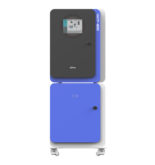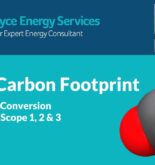UV Persulphuric Acid Oxidation-type Online Total Organic Carbon (TOC) Analyzer, HATA-4000, is a measuring equipment that has automated the “Continuous Automatic TOC Measuring Method†of the Standard Water Pollutant Testing Method. HATA-4000 has minimized quantitative errors of sample analysis by using peristaltic metering pump and sample loop system, and it is measuring equipment that has been developed to accurately and easily measure TOC by improving the precision through the sensor measurement value correction function according to the gas flow rate. Through the application of UV persulphuric acid oxidation method, it has wide range of applications from rivers to wastewater.
Characteristics
HATA-4000
-
Distribution of Sample and Reagent Using Multi-channel Valves
- Quantitative distribution of sample and reagent by using patented multi-channel valve system
-
High Accuracy
- Use of high-performance micro-pulse control pump
- Quantitative supply of sample through self-developed sample loop
- Sensor value correction function according to gas flow rate
-
Self-diagnostics and Auto Calibration
- Self-diagnostic function for errors during measurement
- 3-point manual calibration and automatic calibration function
-
Easy operation
- Easy maintenance through simplification of flow channel
- User friendly operating program
-
Economic
- Reduction of gas usage compared to conventional products
-
Scalability (Option)
- Capable of analyzing 3 sample lines
- Capable of measurement frequency setting per sample line
Principle
- After phosphate is inserted into the sample being analyzed, the inorganic carbon (TIC) of the sample is removed through purging by carrier gas, and then, a fixed quantity is measured by transferring the TIC-removed sample to the sample loop. After inserting the oxidizing agent (sodium persulfate) into the quantified sample, the organic material is oxidized by UV irradiation, and carbon dioxide that is generated here is measured by using the NDIR (Non-dispersive Infrared) detector. By calculating the quantity of carbon dioxide measured with the NDIR (Non-dispersive Infrared) detector, it is converted to TOC concentration.

Specification
-
-
- Measurement item
-
Total Organic Carbon (TOC)
-
- Measurement method
-
UV + Sodium persulfate oxidization method / NDIR detection method
-
- Measurement range
-
0~30mg/L(Other ranges are available upon request)
-
- Measurement interval
-
10min (Adjustable)
-
- Detection limit
-
0.05mg/L F.S.
-
- Accuracy
-
±2% F.S.
-
- Reproducibility
-
±2% F.S.
-
- Linearity
-
±3% F.S.
-
- Zero/Span drift
-
±2% F.S.
-
- Calibration
-
Auto/manual calibration by standard solution
-
- Sample/Reagent measurement method
-
Pulse control, Reagent loop injection system
-
- Sample/Reagent distribution method
-
6-port distribution control method (Fixed quantity injection with multi-channel valve system)
-
-
-
- Operation system
-
Windows 7 (CPU process) or more
-
- Output
-
TCP/IP, DC 4~20mA, RS-232C
-
- Status display
-
Normal operation, on calibration, error
-
- Display
-
Color TFT LCD 8″ (Touch screen)
-
- Power
-
AC 220V, 50/60Hz
-
- Power consumption
-
Average 70W
-
- Voltage regulation
-
3% or less
-
- Data storage capacity
-
HDD 100G or more
-
- Data output
-
USB terminal
-
- Enclosure / Size
-
Steelã€IP55 / 500(W) â…¹ 335(D) â…¹ 750(H) mm
-
- Operating humidity
-
RH 95% or less
-
Application
Application Field
-
Water resource
- National Online Water Quality Monitoring System
- National Non-point Pollution Monitoring System
-
Drinking water
- Potable water plant process management
-
Wastewater
- STP/IWWTP, IWWTP effluent monitoring
- STP/IWWTP process management
-
Industry
- Industrial process management
References
- Gurye, Gyeongancheon
Installation Pictures
-
 Gyeongancheon
Gyeongancheon



